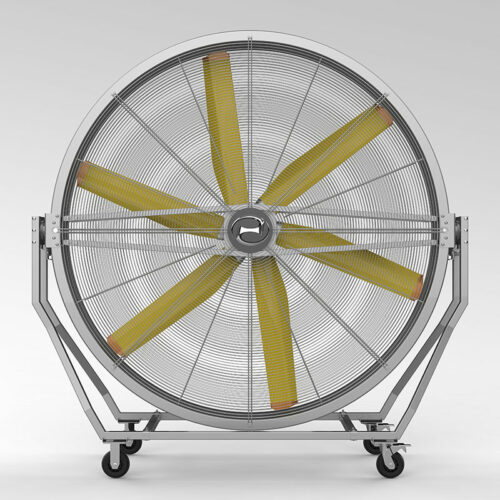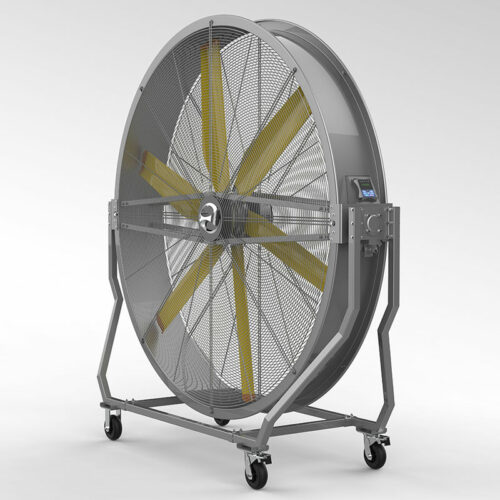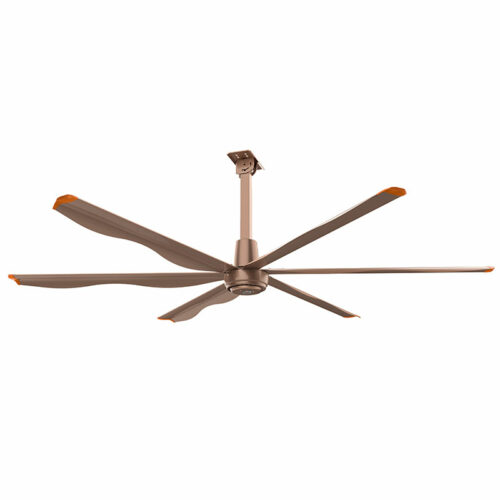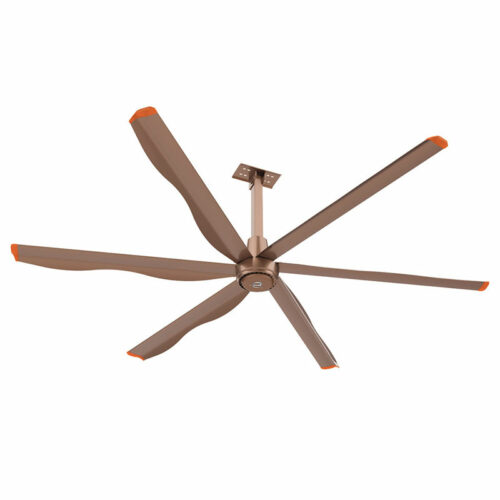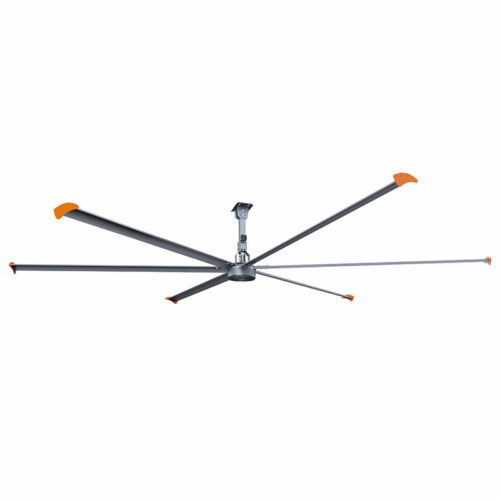We offer a line of both high volume, low speed (HVLS fans and high volume, high speed (HVLS) fans. Diamond industrial and commercial fans are being used in a variety of applications across the world: restaurant fans, aircraft hangar fans, gym fans, and even barn fans.
MORE THAN JUST COOLING…
Diamond industrial fans have benefits year-round. They keep your facility cool in the summer and, in the colder months, they can be used for air destratification (a process that mixes warm air from the ceiling with cooler air from the floor). Ultimately, destratification fans help create a more comfortable environment while saving on energy costs.
WHY HIGH-VOLUME, HIGH-SPEED FANS?
Our portable high-volume, high-speed (HVHS) fans can help solve your air movement problem and improve productivity by reducing effective temperatures of the working environment in your warehouse quickly. Additionally, our application engineers are trained to use strategic planning to apply HVHS fans in a way that will maximize performance and airflow in your facility, while giving you the year-round comfort and results you desire.
Applications
Available in three styles, Diamond’s portable HVLS industrial fans are perfect for areas that need to be cooled off quickly:
- Warehouses
- Assembly and production lines
- Loading docks
- Machine shops
- Bakeries
- Laundries
- Gymnasiums
- Auto repair facilities
- And more!
Key Characteristics and Features of HVLS Industrial Fans:
1. Size and Blade Design:
Industrial ceiling fans are typically larger in size compared to residential fans. They often have blades ranging from 8ft to over 24ft (2.4 to 7.3m) in diameter.
The blade design of industrial ceiling fans is optimized for moving large volumes of air efficiently. Blades may be wider and have a different shape to maximize airflow.
2. High Airflow and Coverage:
Industrial ceiling fans are designed to move a significant amount of air, making them suitable for large spaces such as warehouses, manufacturing plants, gyms, and commercial kitchens.
These fans are capable of covering expansive areas, ensuring consistent air circulation and temperature control.
3. Mounting Options:
Industrial ceiling fans offer various mounting options to accommodate different ceiling heights and installation preferences. Common mountings include standard download mounts and close-to-ceiling mounts.
Some models can be mounted on angled ceilings or as part of high-bay lighting fixtures.
4. Motor Power and Durability:
The motors in industrial ceiling fans are robust and designed to handle continuous operation, making them suitable for commercial and industrial environments.
They often feature sealed bearings and heavy-duty components to withstand dust, moisture, and other harsh conditions.
5. Variable Speeds:
Many industrial ceiling fans come with variable-speed controls, allowing users to adjust the fan’s speed to match the specific cooling or ventilation needs of the space.
Variable speed settings also contribute to energy efficiency by reducing power consumption when maximum airflow isn’t required.
6. Energy Efficiency:
Some industrial ceiling fan models are designed to be energy-efficient, which can help reduce electricity costs in large facilities where multiple fans are in operation.
7. Quiet Operation:
Despite their size and power, modern industrial ceiling fans are designed to operate quietly, ensuring minimal disruption to the work environment.
8. Safety Features:
Safety is a priority in industrial settings. Some fans are equipped with features like thermal overload protection to prevent overheating.
9. Optional Accessories:
Many industrial ceiling fans can be equipped with accessories such as light kits, remote controls, or wall-mounted controls for added convenience.
10. Compliance with Regulations:
Depending on the industry and location, industrial ceiling fans may need to comply with specific safety and efficiency regulations. It’s essential to choose fans that meet these standards.
Industrial fans play a vital role in maintaining comfortable and safe working conditions in large industrial and commercial spaces. When selecting an industrial ceiling fan, it’s crucial to consider factors such as the size of the space, mounting options, motor durability, and energy efficiency to ensure the fan meets the specific needs of the environment.


